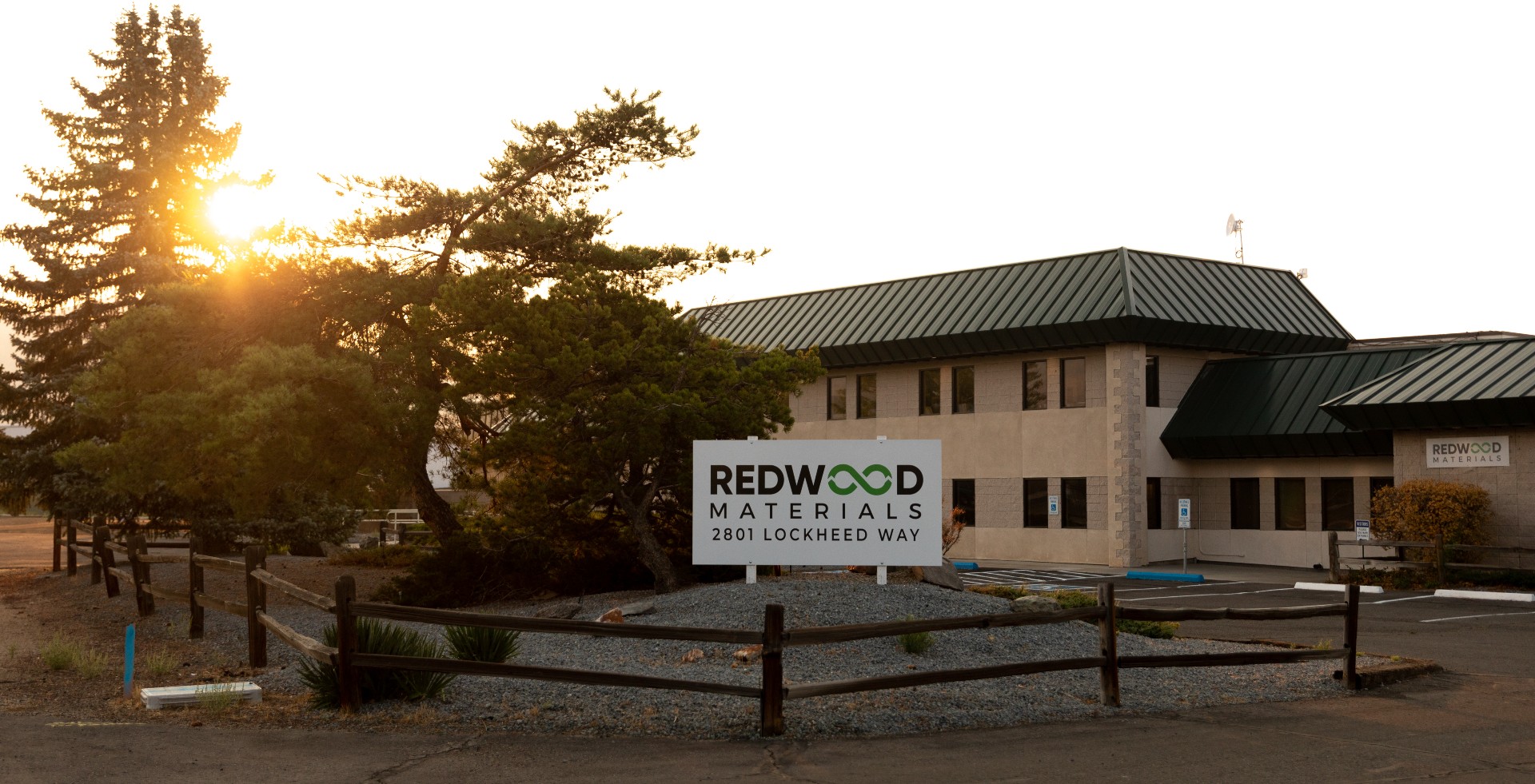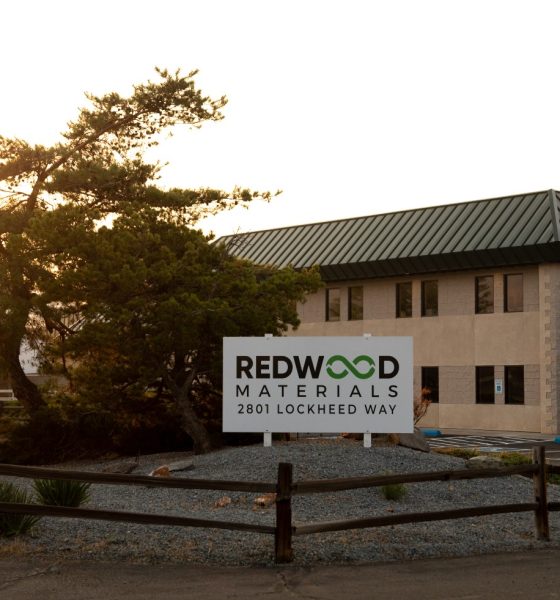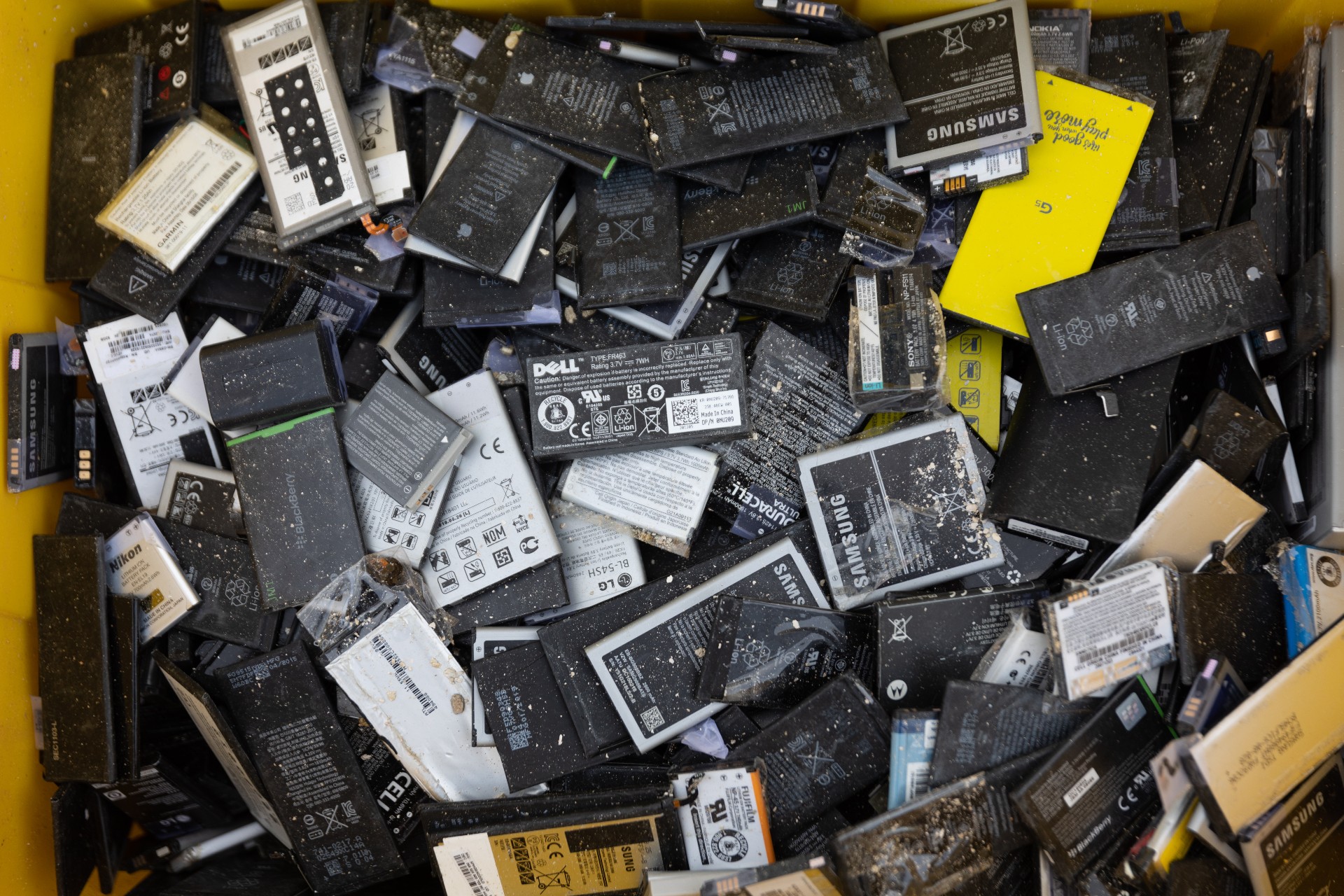

Energy
Redwood Materials opens up new facility just miles from Tesla Giga Nevada
Redwood Materials, a battery and e-waste recycling venture from former Tesla executive J.B. Straubel, has opened up a new manufacturing facility in the Tahoe-Reno Industrial Park, just miles from Tesla’s Giga Nevada production facility.
Redwood’s new facility is just miles from Tesla Giga Nevada, where the automaker has a joint venture with Panasonic to produce electric vehicle batteries. Tesla also manufactures electric motors for the Model 3 in the Nevada Gigafactory.
In 2017, JB Straubel founded Redwood Materials to work on the recycling processes of lithium-ion batteries and electronic waste materials. He kept his post as Tesla’s Chief Technical Officer until July 2019, where the company gave him an advisory role. Over the past several years, Redwood has started to expand its business, taking on new products to recycle like solar panels and establishing new partnerships and recycling deals with companies like Nissan LEAF battery supplier AESC and Tesla. The partnerships contribute to around 3 GWh annually, equating to about 45,000 cars or 60 tons of waste every day.
Two Tesla Execs linked to advanced recycling startup Redwood Materials
With more partnerships and more products being taken on by Redwood in their attempts to expand the recycling of batteries and sustainable energy products, the company recently purchased a 100-acre land plot in the Tahoe-Reno Industrial Center. The purchase of a new property expands Redwood’s potential battery recycling efforts. With the ever-growing electric vehicle market, battery recycling efforts and ventures will be a highly sought-after entity in the coming years as vehicles begin to reach the end of their life cycle. However, it goes past EVs because cell phones, laptops, solar panels, and other consumer products that utilize lithium-ion batteries for operation will also need to be sustainably handled at the end of their life cycle.
While Redwood is only a few short years into its journey as a company, it has been working on expanding its potential footprint into the industry. While its initial facility in Carson City, Nevada, sits just 20 miles south of the new property in Reno-Sparks, Straubel says that Redwood is working on expanding, but it’s not concerned about publicity.
“We’ve been on the quiet side because we prefer to make progress and get things done,” he said to the Reno Gazette Journal. “All that said, (the company) has been growing rapidly, and business has been great. We felt it was time to connect a bit more with the local community and help raise awareness for hiring and make sure people realize this is a worthy and unique opportunity here as well.”
The expanding market of consumer products that utilize lithium-ion batteries is huge. Not to mention, it’s also global. AirPods, electric bikes, toothbrushes, cell phones. You name it, it probably has a battery in it, and Straubel says that the environmental impact is great during the product’s lifetime is great. However, when it breaks or dies, what to do with the batteries afterward is what the real concern is. Recycling the batteries to give them a second use, especially in the application of electric vehicles, is what Straubel seems mostly concerned about.
Credit: Redwood Materials
“It’s a great thing for the environment, but it puts massive pressure on the supply chain and resources to build all these cars and batteries,” he added.
The Carson City facility is currently undergoing a 150,000 square foot expansion project, making it 550,000 square feet in total. The reason for the Tahoe-Reno location in Reno-Sparks is simple: Tesla Gigafactory.
In 2019, Panasonic and Redwood inked a deal that would allow the company to take the scrap generated from the Gigafactory and recycle it. It also has a deal with Amazon and will recycle the e-commerce giant’s lithium-ion batteries and other e-waste materials. Another reason for the Nevada location was Straubel’s familiarity with the area, he said. “It’s a very business-friendly climate politically and economically, and there’s generally more space to grow. You could also build a company a little bit faster and do so without some of the constraints…you have in California or other places like that.”
The act of recycling EV batteries and other lithium-ion-based products adds an extra environmental element to the entire process. Of course, the lifespan of electric vehicles is extremely environmentally conscious. Still, with Redwood’s recycling efforts, it’s becoming a completely well-rounded supply chain in terms of Earth-safe production and manufacturing. Redwood is also looking to expand its workforce by creating around 500 additional jobs starting this year, a drastic increase from its 130 current employees.

Energy
Tesla starts hiring efforts for Texas Megafactory
Tesla’s Brookshire site is expected to produce 10,000 Megapacks annually, equal to 40 gigawatt hours of energy storage.

Tesla has officially begun hiring for its new $200 million Megafactory in Brookshire, Texas, a manufacturing hub expected to employ 1,500 people by 2028. The facility, which will build Tesla’s grid-scale Megapack batteries, is part of the company’s growing energy storage footprint.
Tesla’s hiring efforts for the Texas Megafactory are hinted at by the job openings currently active on the company’s Careers website.
Tesla’s Texas Megafactory
Tesla’s Brookshire site is expected to produce 10,000 Megapacks annually, equal to 40 gigawatt hours of energy storage, similar to the Lathrop Megafactory in California. Tesla’s Careers website currently lists over 30 job openings for the site, from engineers, welders, and project managers. Each of the openings is listed for Brookshire, Texas.
The company has leased two buildings in Empire West Business Park, with over $194 million in combined property and equipment investment. Tesla’s agreement with Waller County includes a 60% property tax abatement, contingent on meeting employment benchmarks: 375 jobs by 2026, 750 by 2027, and 1,500 by 2028, as noted in a report from the Houston Business Journal. Tesla is required to employ at least 1,500 workers in the facility through the rest of the 10-year abatement period.
Tesla’s clean energy boom
City officials have stated that Tesla’s arrival marks a turning point for the Texas city, as it highlights a shift from logistics to advanced clean energy manufacturing. Ramiro Bautista from Brookshire’s economic development office, highlighted this in a comment to the Journal.
“(Tesla) has great-paying jobs. Not just that, but the advanced manufacturing (and) clean energy is coming to the area,” he said. “So it’s not just your normal logistics manufacturing. This is advanced manufacturing coming to this area, and this brings a different type of job and investment into the local economy.”
Energy
Tesla and Samsung SDI in talks over new US battery storage deal: report
The update was related by industry sources and initially reported by South Korean news outlets.

Recent reports have suggested that Tesla and Samsung SDI are in talks over a potential partnership to supply batteries for large-scale energy storage systems (ESS).
The update was related by industry sources and initially reported by South Korean news outlets.
ESS batteries to be built at Samsung’s Indiana plant
As noted in a report from Korea JoongAng Daily, the demand for energy storage systems has been growing rapidly in North America, thanks in no small part to the surge in AI investments across numerous companies. With this in mind, Tesla has reportedly approached Samsung SDI about a potential battery supply deal.
The deal is reportedly worth over 3 trillion Korean won (approximately $2.11 billion) and will span three years, according to The Korea Global Economic Daily. A battery supply deal with Samsung SDI could make sense for Tesla as the company already has a grid-scale battery, the Megapack, which is perfect for industrial use. Samsung SDI could simply supply cells for the EV maker.
Production of the batteries would reportedly take place at Samsung SDI’s joint venture factory with Stellantis in Indiana, which is currently under construction. Samsung SDI recently announced plans to use part of that plant’s EV lines to produce cells for ESS, with a targeted capacity of 30 GWh by the end of next year.
Tesla and Samsung’s partnership
At present, only a handful of manufacturers, including Korea’s LG Energy Solution, Samsung SDI, SK On, and Japan’s Panasonic, are capable of producing energy storage-scale batteries domestically in the United States. A Samsung SDI official issued a comment about the matter, stating, “Nothing has been finalized regarding cooperation with Tesla.”
The possible energy storage system deal adds another layer to Tesla’s growing collaboration with Samsung, which is already in line as a partner in the upcoming production of Tesla’s AI5 and AI6 chips. Early sample manufacturing of the AI6 is expected to begin in South Korea, with mass production slated for Samsung’s Texas-based Taylor foundry when it starts operations.
The AI6 chip will power Tesla’s next wave of high-volume projects, including the Optimus humanoid robot and the autonomous Cybercab service. Musk has called the partnership with Samsung a “real collaboration,” adding that he personally plans to “walk the line” at the Taylor facility to speed up progress.
Energy
Tesla VP hints at Solar Roof comeback with Giga New York push
The comments hint at possible renewed life for the Solar Roof program, which has seen years of slow growth since its 2016 unveiling.

Tesla’s long-awaited and way underrated Solar Roof may finally be getting its moment. During the company’s Q3 2025 earnings call, Vice President of Energy Engineering Michael Snyder revealed that production of a new residential solar panel has started at Tesla’s Buffalo, New York facility, with shipments to customers beginning in the first quarter of 2026.
The comments hint at possible renewed life for the Solar Roof program, which has seen years of slow growth since its 2016 unveiling.
Tesla Energy’s strong demand
Responding to an investor question about Tesla’s energy backlog, Snyder said demand for Megapack and Powerwall continues to be “really strong” into next year. He also noted positive customer feedback for the company’s new Megablock product, which is expected to start shipping from Houston in 2026.
“We’re seeing remarkable growth in the demand for AI and data center applications as hyperscalers and utilities have seen the versatility of the Megapack product. It increases reliability and relieves grid constraints,” he said.
Snyder also highlighted a “surge in residential solar demand in the US,” attributing the spike to recent policy changes that incentivize home installations. Tesla expects this trend to continue into 2026, helped by the rollout of a new solar lease product that makes adoption more affordable for homeowners.
Possible Solar Roof revival?
Perhaps the most intriguing part of Snyder’s remarks, however, was Tesla’s move to begin production of its “residential solar panel” in Buffalo, New York. He described the new panels as having “industry-leading aesthetics” and shape performance, language Tesla has used to market its Solar Roof tiles in the past.
“We also began production of our Tesla residential solar panel in our Buffalo factory, and we will be shipping that to customers starting Q1. The panel has industry-leading aesthetics and shape performance and demonstrates our continued commitment to US manufacturing,” Snyder said during the Q3 2025 earnings call.
Snyder did not explicitly name the product, though his reference to aesthetics has fueled speculation that Tesla may finally be preparing a large-scale and serious rollout of its Solar Roof line.
Originally unveiled in 2016, the Solar Roof was intended to transform rooftops into clean energy generators without compromising on design. However, despite early enthusiasm, production and installation volumes have remained limited for years. In 2023, a report from Wood Mackenzie claimed that there were only 3,000 operational Solar Roof installations across the United States at the time, far below forecasts. In response, the official Tesla Energy account on X stated that the report was “incorrect by a large margin.”








